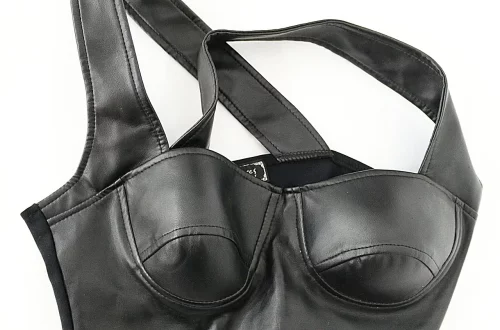
Understanding Bernedoodle Shedding: What You Need to Know
Understanding the complexities of dog grooming can be a daunting task for many pet owners. Among the myriad of breeds available today, the Bernedoodle has gained significant popularity due to its appealing traits. This hybrid breed, a mix of the Bernese Mountain Dog and the Poodle, is often celebrated for its friendly demeanor and intelligence. However, potential owners often find themselves wondering about one particular aspect: shedding.
Shedding is a natural process in dogs, and it can vary widely across different breeds. For Bernedoodles, the shedding pattern is influenced by their genetic makeup, which can result in a coat that ranges from wavy to curly. While many people are attracted to the Bernedoodle due to its hypoallergenic reputation, understanding the nuances of shedding in this breed is essential for prospective owners. The ability to gauge how much maintenance and grooming a Bernedoodle requires can significantly impact the overall ownership experience.
In this exploration, we will delve into the factors that influence shedding in Bernedoodles, their grooming requirements, and tips for managing fur around your home. Whether you are already a proud owner or considering welcoming a Bernedoodle into your life, understanding shedding will help you make informed decisions about care and maintenance.
Factors Influencing Shedding in Bernedoodles
Shedding in Bernedoodles is not a straightforward subject, as several factors come into play. First and foremost, it’s essential to recognize that shedding is influenced by the specific genetic traits inherited from both parent breeds. Poodles are known for their low-shedding coats, which are often curly and dense. Conversely, Bernese Mountain Dogs have a double coat that sheds more significantly, especially during seasonal changes. This blend creates a variety of coat types in Bernedoodles, which can affect the shedding experience.
Another critical factor is the type of Bernedoodle you have. There are three main sizes: standard, mini, and tiny. Generally, larger Bernedoodles tend to shed more than their smaller counterparts due to the volume of hair. Additionally, the specific coat type—whether it’s more Poodle-like or Bernese-like—can significantly influence how much hair is shed.
Health and nutrition also play a crucial role in a dog’s shedding habits. Dogs that are on a balanced diet rich in essential fatty acids are less likely to shed excessively. Regular vet check-ups are vital as underlying health issues, such as allergies or skin conditions, can lead to increased shedding. Therefore, if you notice an unusual amount of fur around your home, it may be wise to consult with a veterinarian to rule out any health concerns.
Lastly, environmental factors such as climate and seasonal changes can impact shedding. Many dogs, including Bernedoodles, experience increased shedding during warmer months as they shed their winter coats. Similarly, stress, hormonal changes, and even changes in routine can contribute to fluctuations in shedding. Understanding these factors can help you better prepare for and manage your Bernedoodle’s shedding.
Grooming Requirements for Bernedoodles
Grooming is an essential part of caring for a Bernedoodle, and it directly correlates with shedding. Regular grooming not only helps manage shedding but also promotes a healthy coat and skin. The frequency of grooming will depend on the specific coat type of your Bernedoodle. For those with a wavy or curly coat, brushing should be done at least 2-3 times a week. This helps to remove loose hair and prevent matting, which can become a significant issue if left unattended.
Using the right tools is crucial for effective grooming. A slicker brush or a comb designed for curly hair can work wonders in keeping your Bernedoodle’s coat in good shape. It’s also beneficial to invest in a de-shedding tool, which can help remove undercoat fur without damaging the top layer. Bathing should be done every few months, or as needed, to maintain cleanliness and reduce odors. However, over-bathing can strip natural oils from their coat, leading to dryness and increased shedding.
Professional grooming services can also be a great option, especially for those who may not feel comfortable handling the grooming themselves. Many groomers are well-versed in the specific needs of Bernedoodles and can provide services such as clipping and de-shedding treatments. Regular grooming appointments can help keep your dog looking its best while managing shedding effectively.
Additionally, incorporating regular activities like exercise and socialization into your dog’s routine can contribute to overall health, which in turn can affect shedding. A healthy, happy dog is likely to shed less than one that is stressed or unwell. Therefore, maintaining a balanced lifestyle for your Bernedoodle will complement your grooming efforts and help manage shedding.
Tips for Managing Shedding at Home
While grooming is essential for keeping your Bernedoodle’s shedding under control, there are several strategies you can employ at home to manage the fur that inevitably finds its way onto your floors and furniture. One of the most effective methods is to establish a regular cleaning routine. Vacuuming frequently, especially with a vacuum designed for pet hair, can significantly reduce the amount of fur in your home.
Using lint rollers or pet hair removers can also be a quick fix for removing hair from clothing and upholstery. For more extensive clean-ups, consider investing in a pet-specific vacuum attachment, which can help tackle fur on various surfaces more effectively.
Creating a designated space for your Bernedoodle can also help contain shedding. Designate specific areas where your dog can relax and play, and consider using washable covers on furniture. This way, you can easily clean or replace covers when fur accumulates. Additionally, having a pet bed that is easy to clean can further help manage shedding within your living space.
Another effective strategy is to encourage your Bernedoodle to play outside more often. Outdoor play can help reduce the amount of fur that accumulates indoors, especially if your dog has access to an outdoor space where they can shed naturally. However, be sure to monitor your pet to ensure they are safe and comfortable outdoors.
Lastly, consider offering treats or supplements that promote healthy skin and coat. Omega-3 fatty acids and other nutrients can contribute to a healthier coat, reducing the amount of shedding over time. Always consult your veterinarian before introducing new supplements to ensure they are appropriate for your dog.
In conclusion, managing shedding in Bernedoodles is a multifaceted approach that includes understanding the factors influencing shedding, maintaining a regular grooming routine, and implementing effective home management strategies. By being proactive, you can create a comfortable environment for both you and your furry friend.
**Disclaimer:** This article is not intended as medical advice. If you have concerns about your dog’s health or shedding, please consult a veterinarian for professional guidance.




